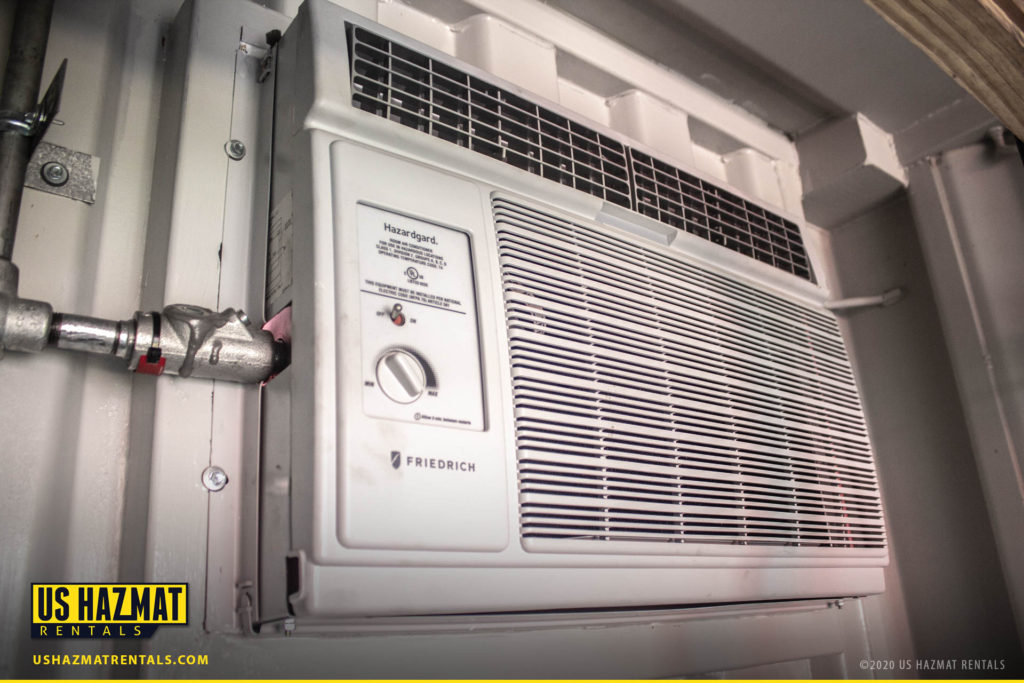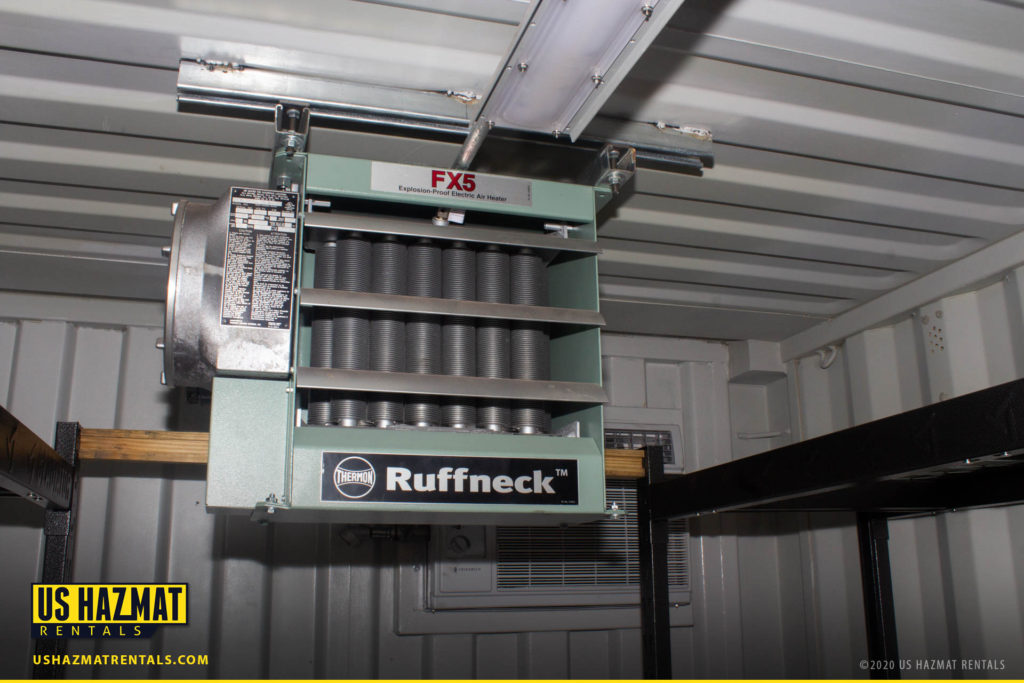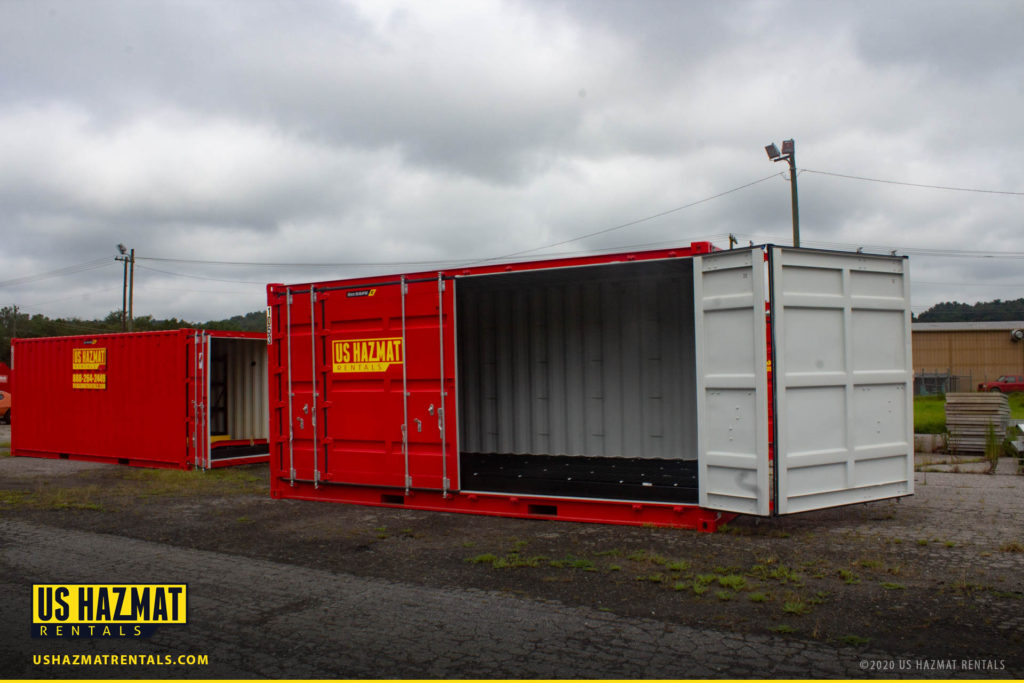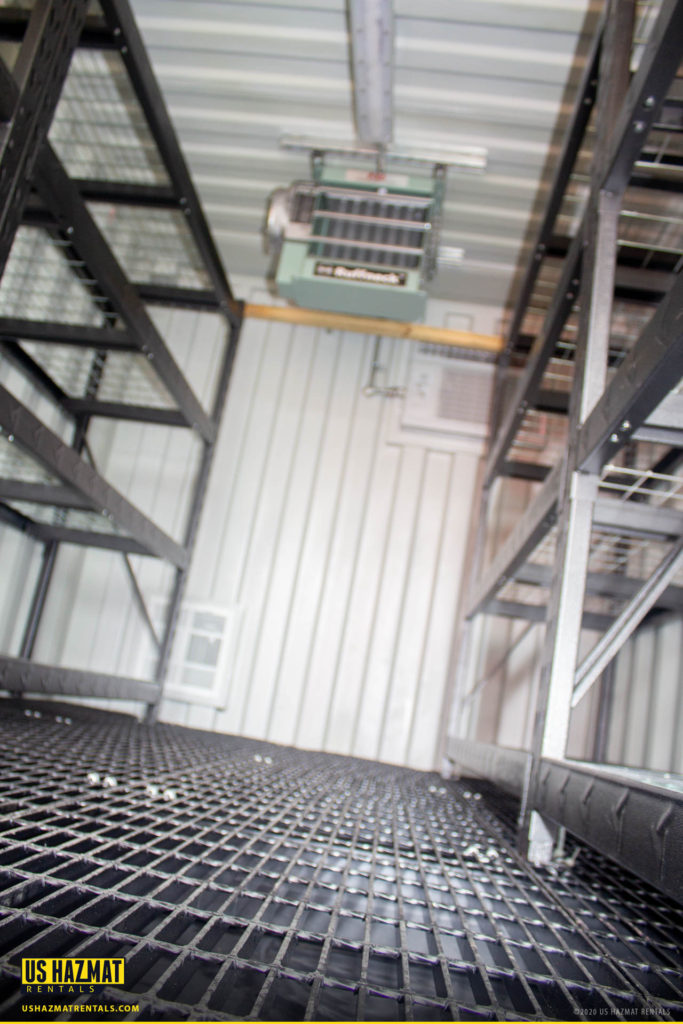Summer came early to the Midwest as record setting temperatures continue to bake that nation’s heartland. As millions retreat indoors to the cool reprieve of climate controlled homes, the region’s industrial workforce braced itself for hazardous conditions brought on by the sudden upswing in temperatures. Warehouses and factory floors become real life sweatshops as poor ventilation and power-stressed AC units struggle to cool an overheated workforce. Construction workers on the jobsite must withstand the relentless beating of the unforgiving summer sun and humidity. There’s just no escaping the heat when the mercury reaches the triple digit mark. Every year, dozens of workers succumb to heat exhaustion and fatigue. OSHA has sounded the alarm bells more than once on this seasonal pandemic as it references reports of 344 worker deaths in the US from 2011 to 2019 due to heat exposure. Heat mitigation and chemical storage will continue to perplex jobsites as climate change subjects employees to increased exposure in adverse conditions.
Heat Mitigation and Chemical Storage in Extreme or Excess Heat
But it’s not just workers’ safety you have to worry about on the jobsite. Many jobs require a diverse arsenal of chemicals to fuel powerful heavy duty equipment to complete the task as hand as well as to lubricate, clean and keep massive machinery moving. But many of these hazardous materials and chemicals have low flash points. Petroleum ether, acetone, benzene, and ethanol are particularly vulnerable to heat exposure. Certain solvents, which work faster when heated, tend to evaporate more quickly, increasing the risk of accidental fire. Acetone, which is used to break down and dissolve paint and varnish, can even ignite at room temperature. And what jobsite doesn’t have fossil fuels keeping the gears of progress turning all day long? While integral to any construction zone, these hydrocarbons come with some inherent dangers. When exposed to high heat and humidity, stored gasoline becomes highly volatile and is just a short chemical exchange away from a fire or explosion.
Hidden Dangers of Chemical Storage and High Temperatures

Storing flammable chemicals, especially liquids come with the effect of a triple threat. For one, you have the highly flammable chemical itself. Drums and totes of acetone and ethanol are modern day powder kegs that must be stored under keen supervision. Just one errant spark can send an entire stockpile through the roof, jeopardizing not only the safety of your workforce, but also the entire community, not to mention the residual environmental effects. Then you also have to worry about incompatible storage. Certain dangerous chemicals should never be stored in proximity to one another. Chlorine, for example, should never be stored with ammonia, butane, methane, propane, benzene of turpentine. There are several classifications of hazardous materials who are simply not kindred spirits with their chemical brethren that must coexist to get the job done. And what about water? This is another common misconception that has resulted in countless injuries. Many workers think something as harmless as the most common chemical compound the planet could never produce an adverse chemical reaction. But trying adding water to an acid. An extremely concentrated solution of acid and water can yield violent reaction that boils over, causing undue damage.
Perhaps the most dangerous aspect of storing flammable liquids is its most insidious component: invisibility. Depending on heat and vapor pressure, dangerous chemicals can emit a high concentration of vapor that its invisible to the naked eye. One errant spark or flame can ignite an entire stockpiles. Just because you can’t see the danger doesn’t mean it doesn’t exist. Vapors from incompatible materials and dangerous liquid chemicals can create an entirely different toxic level event resulting in lethal inhalants. Many of chemical vapors are also odorless, adding to the danger of the hidden dangers lurking at the jobsite. It’s why it’s of upmost importance that dangerous chemicals be not only stored in climate controlled storage lockers, but also in separate compartment to reduce the risk of inadvertent contact. But how can you possibly achieving such demanding storage requirements, as dictated by the EPA and OSHA, while still churning out a profit?
Climate Control Compartmentalized Chemical Storage All Under One Roof


You should think of chemical storage and hazardous materials like a tool box or chest. You need all sorts of different types of tools to get the job done. But you can’t make multiple trips back to your work truck or even the warehouse to fetch the tools necessary to meet deadlines and satisfy customers. Remember, time is money! These tools need to be in arm’s reach and easy to retrieve and store when not in use. But organization is also key to timeliness and success. Jumbled up tool boxes are impossible to navigate. Ever tried to find a few nails at the bottom of the tool box that are underneath a hammer, pliers and a few other sharp objects? A few swear words and cuts and bruises will often ensue in the minutes trying to reach what you need at that very moment. The same is true with chemical storage. Necessary, but different classifications of dangerous chemicals should be kept separate, but also easy to access when the time comes.
One Stop Centralized Chemical Storage Solutions for Extreme or Excess Heat

Partitioned steel walls and easy-to-use roll-up doors allow the one-stop storage of dangerous chemicals and hazardous substances. Our four-hour rated chemical storage lockers offer complete one stop chemical storage for payloads of all size and duration. This allows for the compliant, yet separate storage of chemicals of different classifications, so you don’t have to invest in more than one storage locker. Fire rated storage lockers also provide fire suppression systems that quickly douse flames in the event of an accidental fire. Climate control systems can keep dangerous chemicals in an optimal temperature range, so they aren’t subject to rapid fluctuations that could compromise the chemical consistency or stability of products, such as paint.

Keeping Expensive Chemicals in the ‘Goldilocks Zone’
Growing concerns of inflation have kept building materials skyrocketing and economic forecasters don’t see that trend changing in the near future. The same is true with expensive chemicals and their precursors. You simply can’t afford resupplying these expensive items due to improper storage practices. Paint is the most common example of what can go wrong if precautions are not taken. Storing paint in extreme heat or cold can compromise the consistency of paint, causing to coagulate or thin, rendering it useless. There’s nothing more frustrating than stopping in the middle of a job to run to the hardware store to replace valuable equipment because steps were not put in place to protect sensitive materials.
Beat the Heat With These Safety Tips
- Ensure your chemical storage has adequate climate control for your usage and material’s heat tolerance.
- Be sure to check all AC and Ventilation Equipment are in proper working order.
- If you have to access your storage regularly, ensure your climate control is adequate considering the added exposure to extreme temperatures while in use.
- Try to minimize access of the unit and ensure all doors are closed when material access is not necessary.
- If there are any concerns, you might try to add a shade canopy to help shield an exterior storage unit from the sun to help lessen heat absorption from the sun in addition to extreme ambient conditions.
- If considering the acquisition of new storage facilities for your operations. Take into consideration heat-waves and even severe cold fronts. Even if a 2Hr Fire-Rating is all you need, a 4Hr Fire-Rated structure will actually offer you a more insulate barrier to protect and more easily control required temperature ranges and ensure flash-points and freeze levels are never reached, and your required temperature
- If temperature control is critical in your storage environment. Be sure to have adequate redundancy that can safeguard your materials and your staff in the event of a failure. If an AC unit goes down, you want to ensure your product and facility safety during the outage and repair until the unit is repaired or replaced.
Keep Your Employees Safe This Summer
- Allow employees to take frequent breaks when working in extreme heat
- Encourage frequent hydration and allow for easy access to water
- Endurance is key. Allow employees to gradually acclimate themselves to high temperatures. Shortened workdays during the height of summer could also help.
- Educate workers on the dangers of heat and dehydration
- Discourage workers from wearing dark colored clothes






